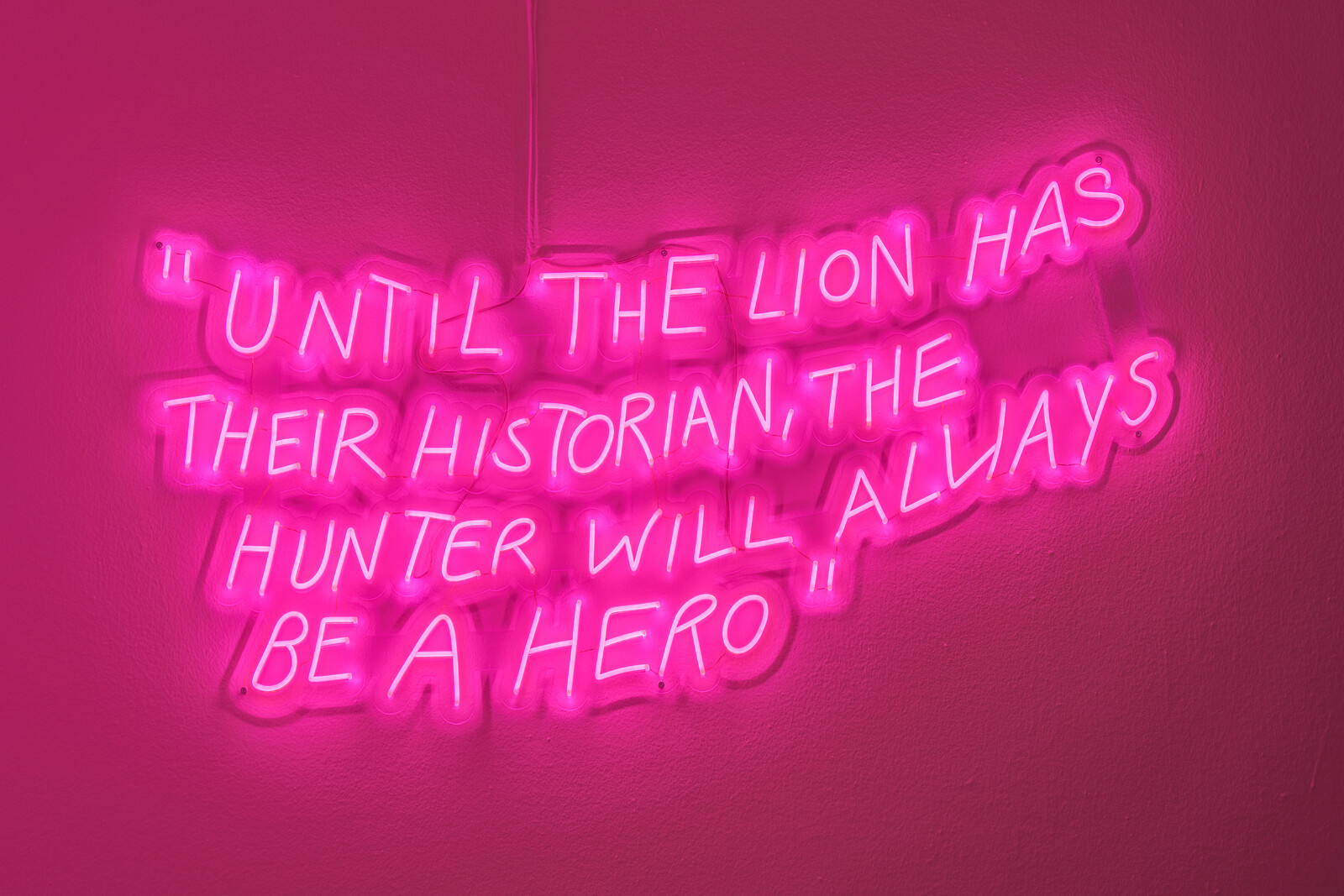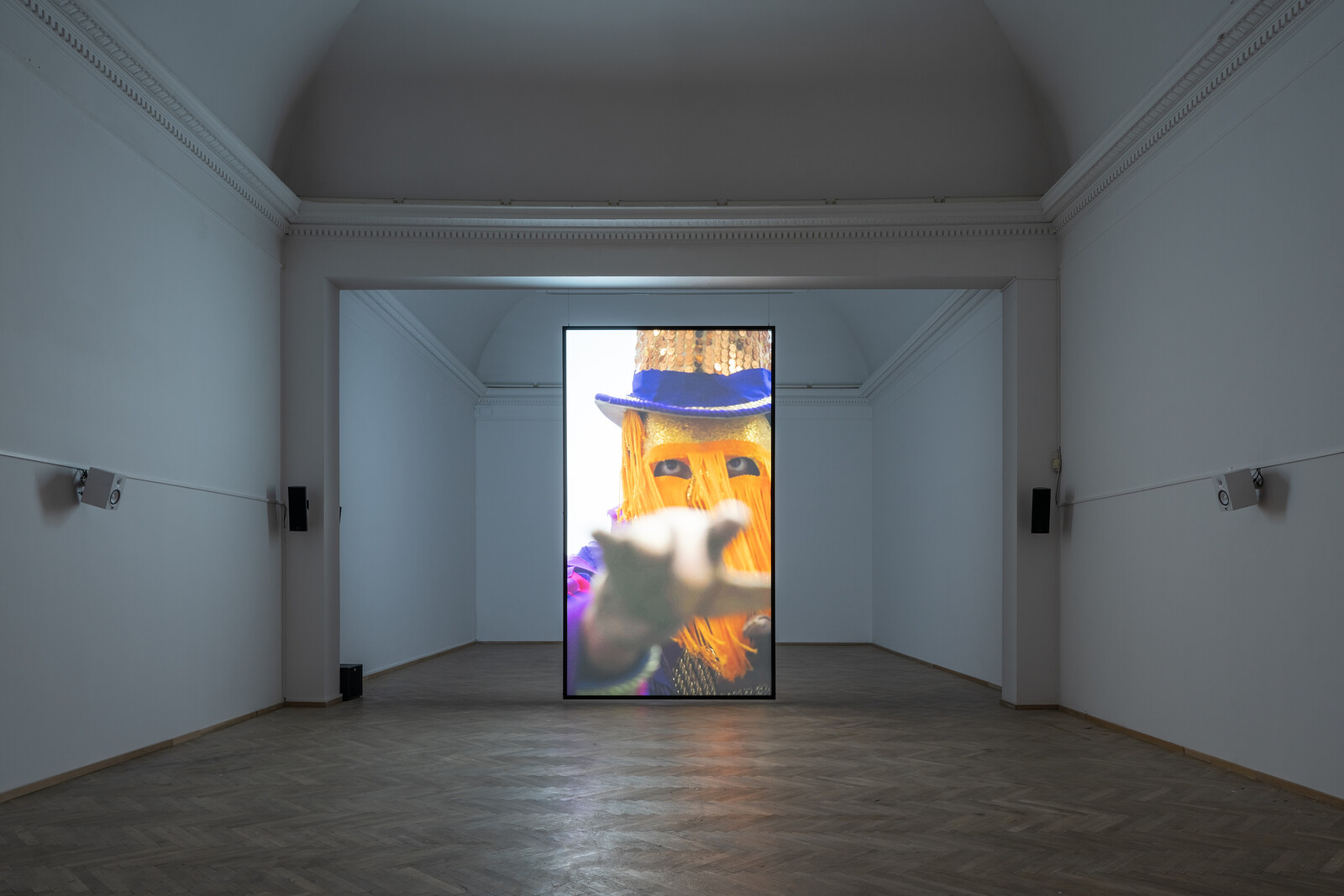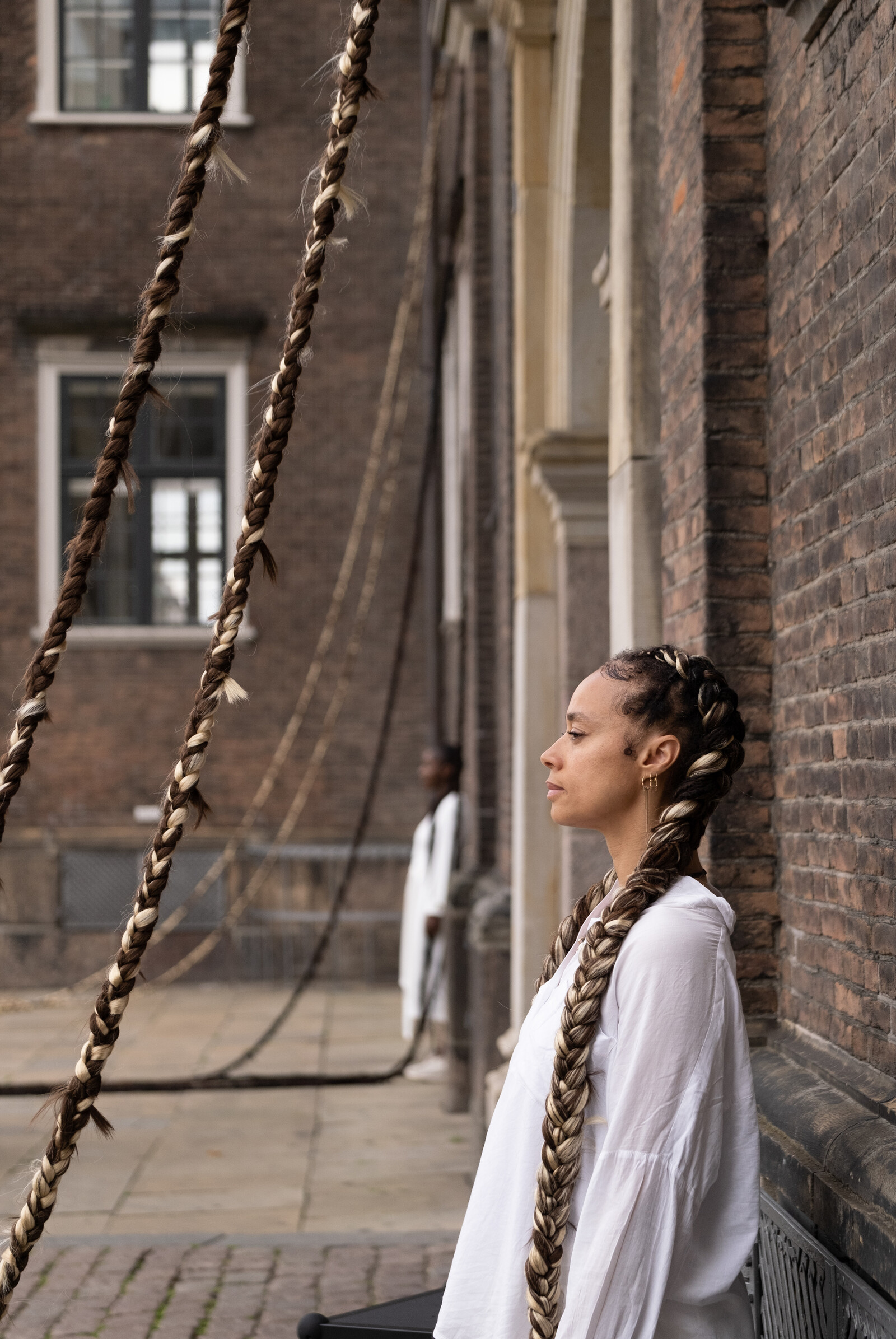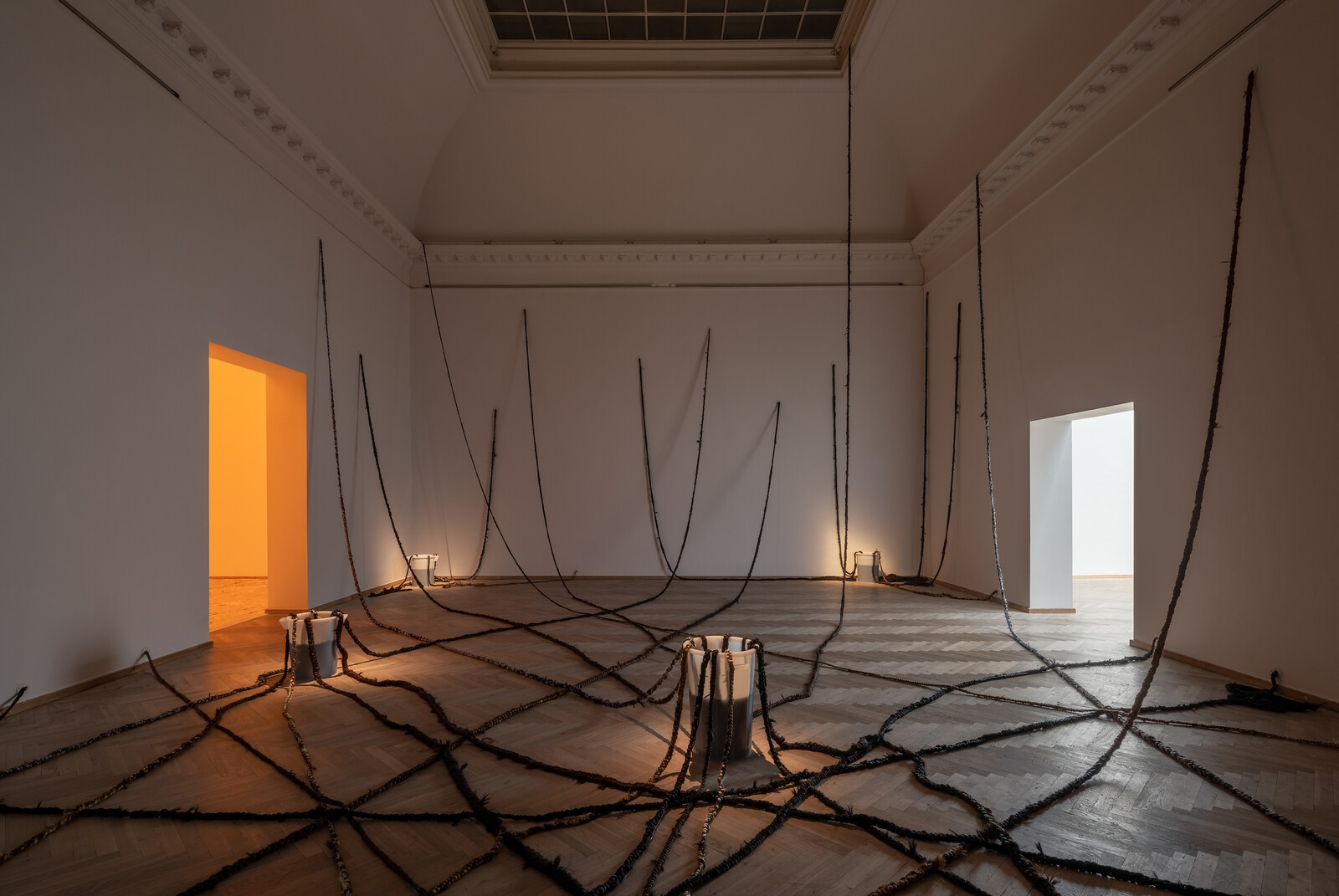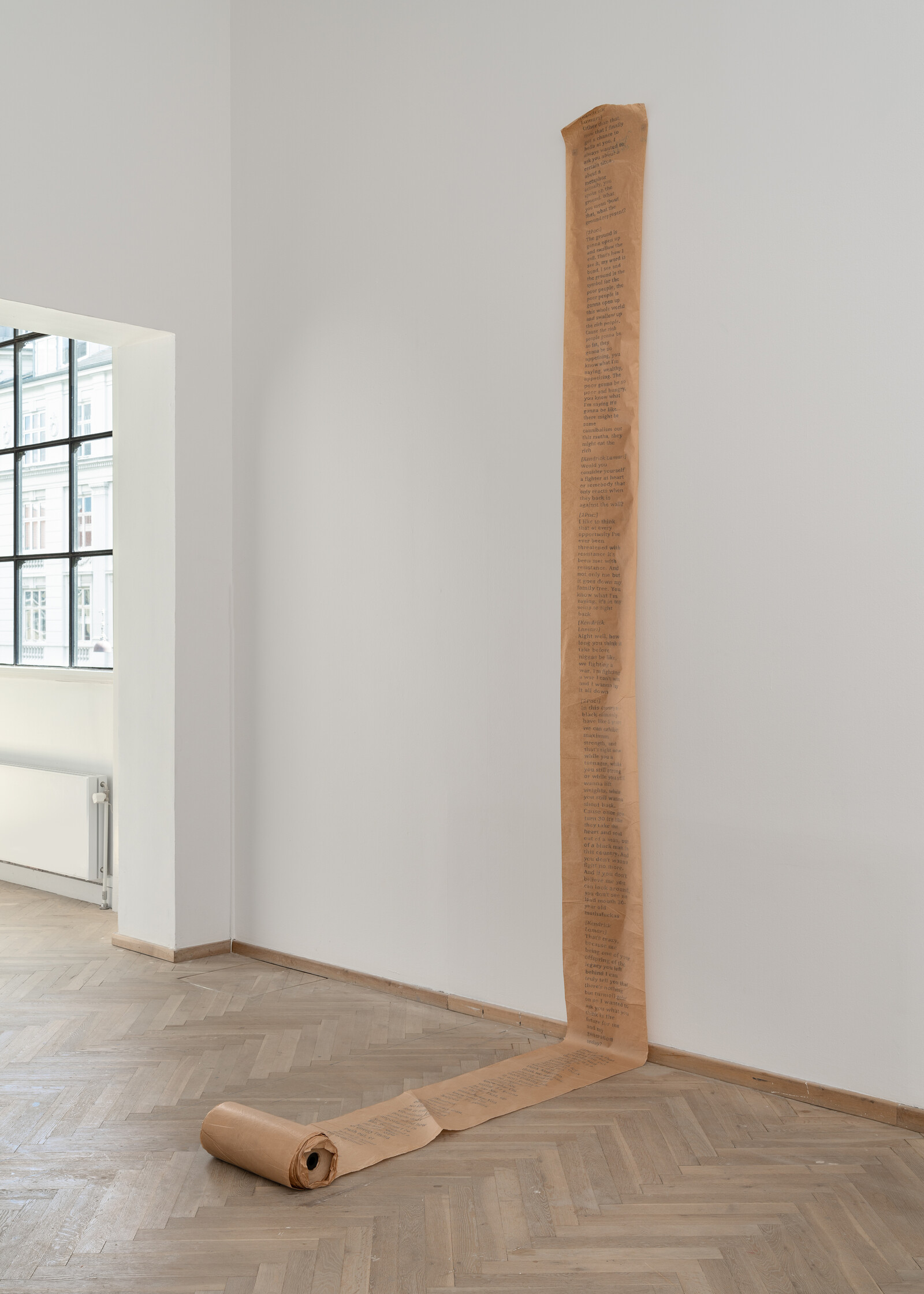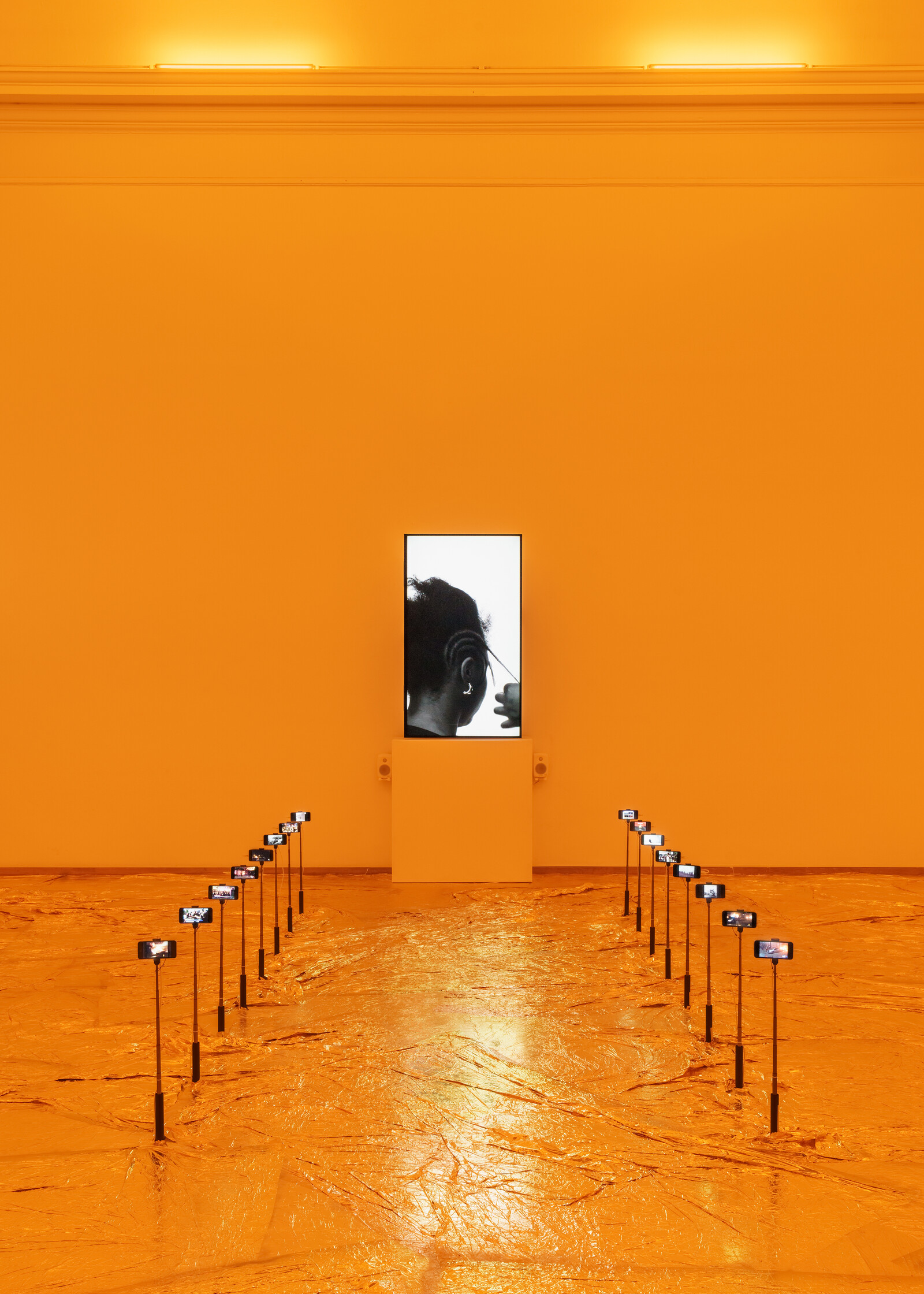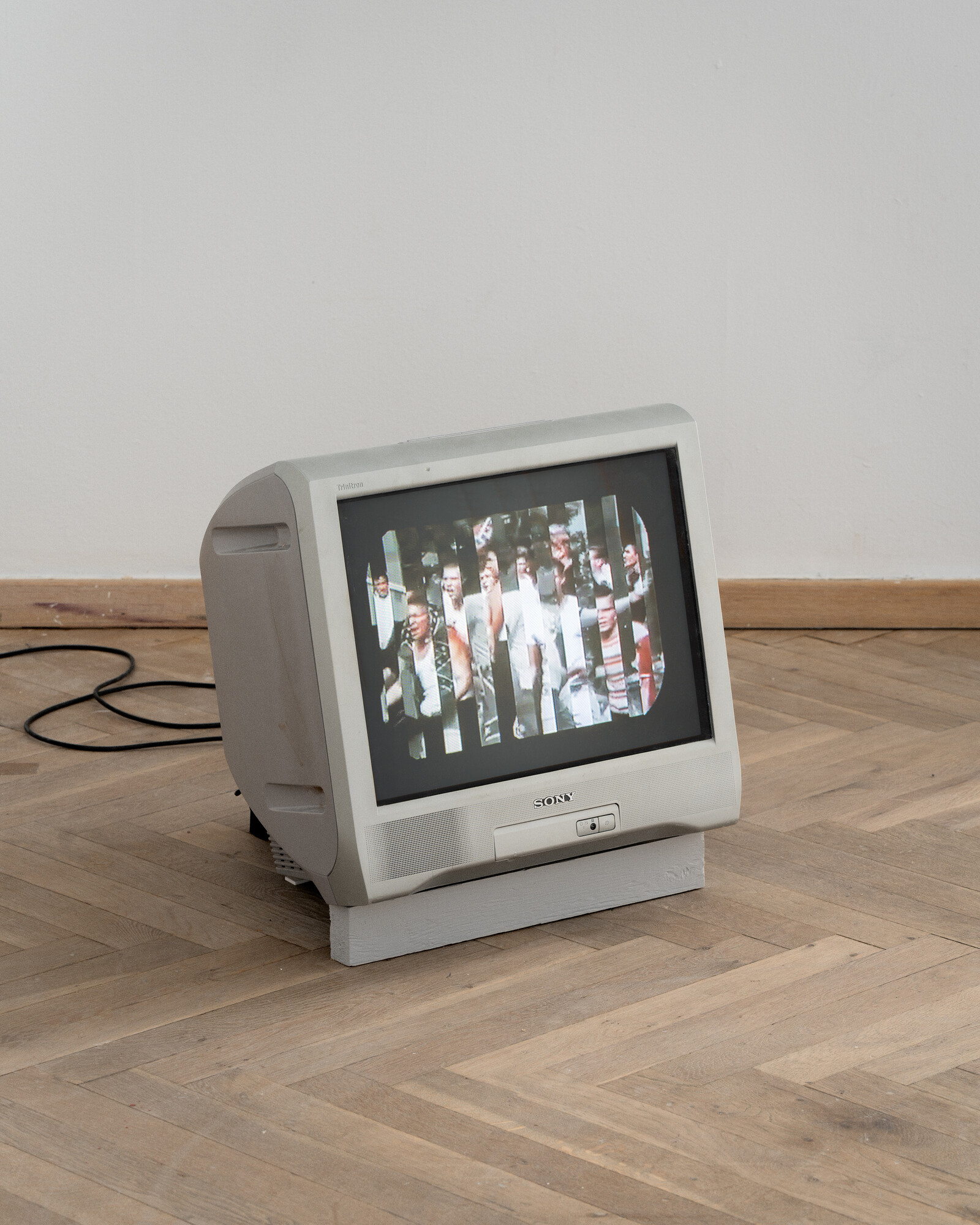Jeannette Ehlers has for many years confronted viewers with the repressed history of colonial exploitation on which large parts of Denmark’s wealth is built. In the old and new works that comprise her solo show at Kunsthal Charlottenborg, “Archives in the Tongue: A Litany of Freedoms,” the Danish-Trinidadian artist looks at this history—in particular how it relates to the Black diaspora—across various media. As a whole, the show forms an open, lively archive with no definitive beginning or end: softly tangled braids of brown and black hair appear in several rooms and extend beyond the Kunsthal’s walls, with dance rhythms and singing voices carrying in one of the performance works taking place outside the museum.
In the first room of the exhibition, the large-scale, portrait-format video Moko is Future (2022) features Moko Jumbie, a mythical figure from Afro-Caribbean folklore. Dressed in carnivalesque clothes, masks, and stilts, Moko is shown ascending from the Atlantic Ocean and dancing through Copenhagen’s streets, with its monuments to dead white men, to bring spiritual healing. “Until the lion has their historian, the hunter will always be a hero” is spelled out in pink neon on one of the walls at Charlottenborg—a found text Ehlers saw tagged on the wall of a dungeon in a former Danish fort in Ghana, which the artist has adopted as a motto of sorts. Here and elsewhere, she explores historical juxtapositions between what is absent and present, domestic and foreign, repressed and overexposed. For Ehlers, the present is always historical: cracks, fissures, and wounds are what gives it its peculiar and ever-changing form.
Many of Ehlers’s new works are characterized by a dedicated attempt to counterweight oppression with shared care, healing, and diasporic spirituality. Yet this desire for healing, as embodied in Moko Jumbie, leaves unanswered the questions of who exactly is being offered love, care, and protection—perhaps reflecting the conflicted nature of reconciliation in the midst of systemic racism. Ehlers’s staging of this desire functions best when it is identified as a problem rather than offered as a solution, as in the poetic didacticism of three works: an excerpt of Hans Christian Andersen’s 1840 romantic drama Mulatten [The Mulatto] in a white Gothic font that seems to emerge out of the white wall (Uden titel (Mulatten, 4. akt, 8. scene. HCA), 2015), a fictional interview between Tupac Shakur and Kendrick Lamar written on a roll of brown wrapping paper (Because of the Spirits, 2015), and a video collage of Martin Luther King playing on a grey Sony television placed on the floor (There is Nothing More Dangerous, 2015). Formally varied yet thematically coherent, these works question why people revolt, and how the healing power of art might fit into this struggle.
More subtle but equally stunning is We’re Magic. We’re Real #3 (Channeling Re-existence into Hollowed Grounds of Healing) (2022), which comprises huge, collectively made braids appearing to grow out of the white walls and ceiling. These braids trail the floor—viewers have to walk carefully to avoid stepping on them—and gather in white plastic tubs filled with dark, bubbling water: resting places of trauma and collective labor, but also enigmas of healing and revolt. This tension between rest and unrest is epitomized in a woman’s whispering voice in the last room of the exhibition. The installation Coil: The Sensuous Way of Knowing (2022) takes the form of an altar, consisting of a portrait-format video flanked by two rows of glowing iPhones, raised on selfie sticks, whose screens show YouTube footage of various historical Black uprisings. These lead up to the larger screen, which shows intimate and undramatic footage of hair being braided: “In these hands are a language unspoken / tightly bound in rebellious manes / Spirits secrets slept in every braid woven / heard gently over the clankering chains.” If history is indeed made in uprisings of the oppressed, Ehlers tells us, it is the everyday practices of braiding, weaving, and entangling that prepare the ground.

